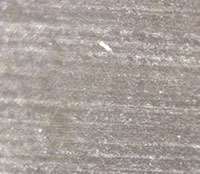Winners and losers in the world of valves, like in most industries today, are created as the players react to a constantly changing environment and marketplace.
The winners are the companies that constantly ask, “What can I do to create greater value for our customers? What future needs can I meet and how can I deliver what customers need better and earlier than everyone else?”
In other words, they are the companies that find ways to measure value proposition. One area in the valve world today that can offer value proposition is decreasing and eliminating fugitive emissions.
VALUE PROPOSITION DYNAMICS
In the area of emissions control, end users want better long-term leak tightness, greater reliability at higher pressures and temperatures, improved stem sealing, lower friction, reduced wear rates and improved process controls. To achieve this, they will focus on developing approved material listings and driving compliance to their requirements through their various organizational divisions. By focusing on the total life-cycle costs of valves, companies can more accurately measure and show the positive impact meeting user needs will have on products.
Certainly, there will always be pressure to keep costs of valve acquisition as low as possible—but the recognition of what those valves cost over their lives will begin to impact decisions. As end users strive to operate more efficiently, they will use their extensive databases to determine the total costs associated with valves, including:
- Transaction cost
- Inventory cost
- Installation cost
- Emissions performance
- Leakage cost
- Sealant injection costs
- Packing adjustment costs
- Lubrication costs
- Preventative maintenance costs
- Periodic inspection costs
- Seat leakage costs
- Process control impacts
In the coming years, as valve asset management programs become better able to analyze the total cost of ownership, this broader view of costs will accelerate.
THE EFFECTS ON EMISSIONS ISSUES
One area where total cost and performance over time affects valves is fugitive emissions sealing. While pumps, flanges and fittings also affect fugitive emissions, their effects are much lower. In fact, the U.S. Environmental Protection Agency (EPA) estimates that over 60% of fugitive emissions emanate from the valves themselves.
Because of this high percentage, the EPA is using its enforcement powers to negotiate consent decrees in refineries and chemical plants and has stepped up enforcement on chemical plants in the last few years. In fact, over 85% of U.S. refineries are now operating under consent decrees, and more are in the midst of negotiations. These agreements commit plants to many specific actions they must take to improve environmental performance. Part of these consent decrees includes enhanced leak detection and repair (LDAR) requirements for valves. Many of the recent consent decrees include moving plants from the former 500 parts per million (ppm) emissions acceptable performance levels to 100 ppm.
As allowable emissions levels decrease, the total cost of plants’ valve populations will increase. More valves will need to be maintained, injected, removed, repaired and reinstalled to meet requirements. In some cases, the consent decrees are also requiring greater frequency of leak detection.
At the same time, the average mean time between emissions failure for valves for the existing valve population decreases because so many of those valves will fail at 100 ppm. Consent decree decisions sometimes mean delay of repair schedules for valves are reduced, which means more valves will be injected online with sealants, which adds cost and can affect process control. As the total cost of valve ownership increases, acquisition cost as percentage of total cost is reduced.
Corporations and their plants are now evaluating the performance of technologies available to meet current and future requirements. Also, even though many recent consent decrees require emissions testing and certification for valves and valve packing to remain below 100 ppm for at least five years, end users want the equipment to last longer.
CERTIFIED VALVES AND TECHNOLOGY
Market dynamics are also affected by new terminology that consent decrees have introduced, such as “Certified Low-Leaking Valves” and “Certified Low-Leaking Valve Packing Technology.” These terms not only define performance parameters but require a written guarantee from valve and packing manufacturers.
For example, according to recent consent decrees, Certified Low-Leaking Valve Packing Technology means technology for which a manufacturer has issued either: 1) a written guarantee that the valve packing technology will not leak above 100 ppm for five years or 2) a written guarantee, certification or equivalent documentation that the valve packing technology has been tested to generally accepted good engineering practices and has been found to be leaking at no greater than 100 ppm.
Similarly, Certified Low-Leaking Valves are valves under the same conditions (a written guarantee that the valve will not leak above 100 ppm for five years or documentation that the valve has been tested to good engineering practices and found leaking at no greater than 100 ppm).
Many test protocols exist to measure the emissions performance of valves and packing products. The two most commonly used protocols are the American Petroleum Institute (API) 622 and International Standards Organization (ISO) 15848-1 standards. The API standards use methane as the test media and EPA Method 21 to measure emissions. The ISO tests use helium as the test medium with vacuum as the leak detection method. (It is important to note the EPA only recognizes methane emissions testing conducted using Method 21.)
API 622/API 624
In addition, the API 622 standard requires corrosion performance testing. This testing examines the amount of galvanic corrosion that occurs between the packing and valve stem, a factor that is often a source of premature failure. As end-users look at root causes of failure and the requirements for long life beyond the five-year minimum, corrosion testing will become much more important.
Valve and packing manufacturers will need to evaluate the performance of existing designs and technology in response to EPA mandates as well the anticipated API 624 requirement. All types of valves, including on/off, control, motor- and air-operated valves are impacted by low emission mandates. The API 622 and 624 standards are based on graphitic packing in rising stem or rotating and rising stem block valves. Components of the test are already in use to test quarter-turn valves, control valves, polytetrafluoroethylene packings, engineered sealing arrangements, etc. to comply with the generally accepted engineering test standards EPA requires.
Valve manufacturers also will need to determine if these tests will be a regular offering for their products or an area of specialty. Specialization keeps manufacturers’ supply costs down since more commodity packing arrangements can be used. Some manufacturers will conduct testing that just meets the EPA mandates, but offer that as standard. Still others will see the value proposition in tougher testing and reducing total life-cycle costs for their product as opportunity.
The EPA’s consent decrees are focused on past transgressions, and the agency expects plants to become more proactive. EPA will expect performance data to be analyzed, best practices to be migrated throughout organizations, engineering standards to reflect current technology, and training for employees and contractors that has a goal of delivering better performance. Suppliers, manufacturers and service companies can assist those plants in looking at the total cost factors involved in plants getting to where the EPA expects them to be.
Meanwhile, this is not just occurring in North America—other parts of the world also are focusing on emission reduction. The International Pollution Prevention and Control directive, Best Achievable Techniques (BAT), are identified as proactive environmental programs for fugitive emissions control. Companies in Europe and elsewhere are putting leak detection and repair programs in place and using smart LDAR cameras to detect areas of pronounced fugitive emission leakage. Asian refiners are visiting the U.S. and Europe to assist in developing environmental programs with a view towards meeting BAT. Programs also are developing for highlighted applications such as Benzene, Toluene, Xylene performance. Recently, the Chinese government shut down plants around Beijing because of dangerous smog levels that overwhelmed the population. Meanwhile, multi-national corporations are increasingly inserting their influence to decrease risks in joint ventures.
SUSTAINABILITY—A STRATEGIC DIRECTION
Many corporations have a substantial impact on the communities that surround their sites and know they need to develop policies that show their corporate responsibility, attention to “green” and how to be a “good neighbor.” However, trying to define and measure social responsibility is difficult and especially hard for processing plants. Many large corporations use the term “sustainability” as a driver of high level decision-making and expect the plants to comply with those decisions.
By using a total life-cycle cost approach, valve manufacturers and their partners can align themselves with the strategic direction of end-users focused on sustainability. All parties can also begin to work towards a proactive approach to emissions. In other words, by enhancing valve-sealing performance and simultaneously lowering a plant’s total costs, a sustainability value proposition is developed.
The reality is that corporations must be in good financial condition to have a positive impact; they must be profitable to invest in infrastructure improvements and create value for shareholders. At the same time, environmental sustainability focuses on actions that do not deplete resources—which leave the world in a better place for generations to come. Plants often focus on reducing emissions and minimizing or eliminating waste to get to that point.
Meanwhile, social responsibility encompasses the idea that corporations have a responsibility to help the people they affect, which includes focusing on health and safety of employees. Companies look to best practices and technology to reduce workplace risks and those risks include leaks of dangerous fluids or emissions. Educating employees on best available techniques is another way the valve industry can offer end-users value proposition from emissions considerations.
Sustainability decision-making combines all three aspects of the equation—it enhances economic opportunity and community well-being while protecting and restoring the natural environment.
In the valve world, the companies that can anticipate and develop areas that address the total cost of valves and incorporate the benefits of sustainability can position themselves as knowledge providers. In other words, they can offer a value proposition to end users that will create much greater returns for all.
Scott Boyson has been directing Chesterton’s (www.chesterton.com) efforts to meet the stringent sealing requirements facing industry. He is responsible for developing new valve packing products and programs to meet these challenges. He has published and presented technical papers, is a member of the Fluid Sealing Association and is an active participant on multiple standards disscussions. Reach him at BoysonS@Chesterton.com.
RELATED CONTENT
-
Pressure relief valves: What makes them different?
Facilities use many different types of valves to keep themselves operating, and each valve within a plant serves a different function.
-
Differences Between Double Block and Bleed and Double Isolation
There is an important distinction between DBB and DIB, as they often fall under the same category and are used interchangeably within the industry.
-
Pressure Relief Valve Basics – Spring-Loaded Safety Relief Valves
Learn for the first time or brush up on this common valve product.











 Unloading large gate valve.jpg;maxWidth=214)


